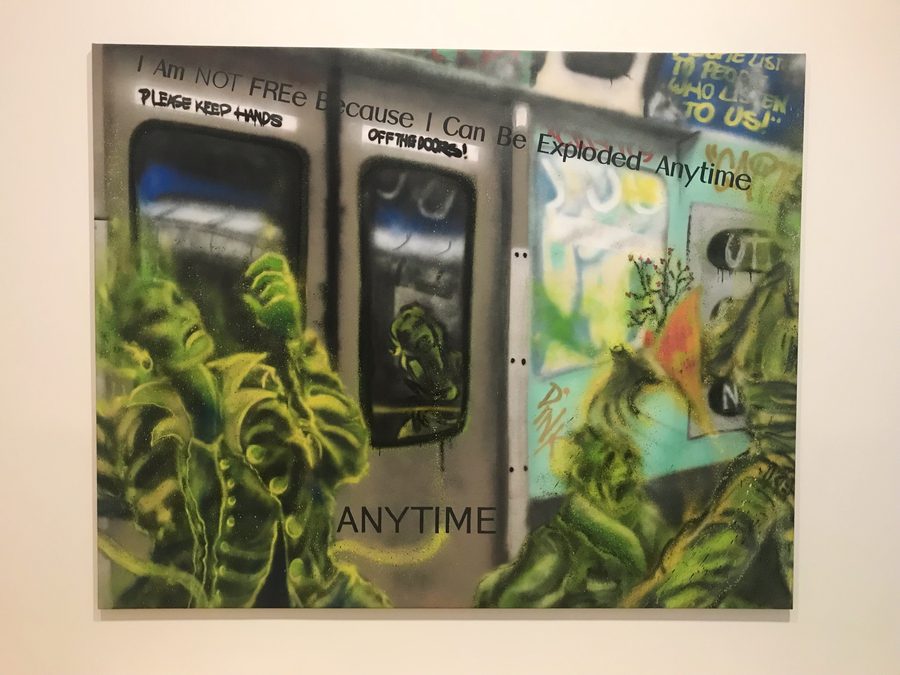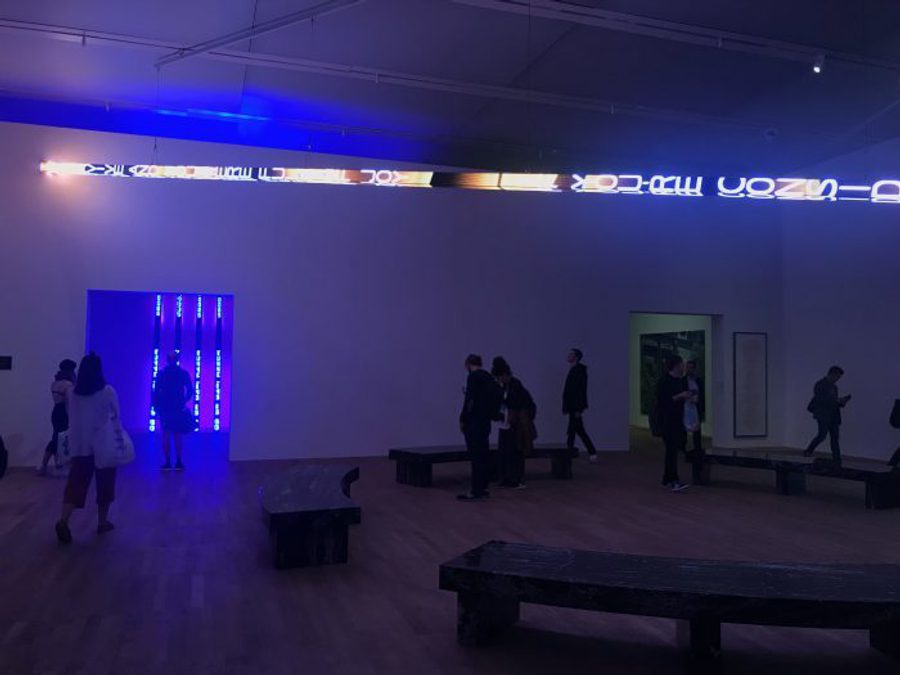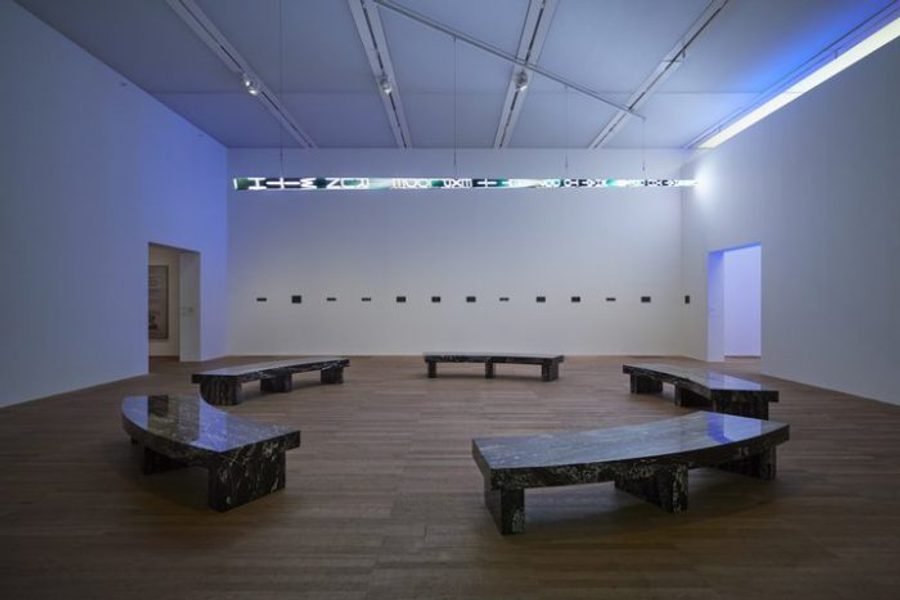Jenny Holzer at the Tate Modern
Emily Pollich reviews the Tate Modern's latest ARTISTS ROOMS display with Jenny Holzer.


Emily Pollich reviews the Tate Modern's latest ARTISTS ROOMS display with Jenny Holzer.


American artist, Jenny Holzer, is known for her text-based installations that are intended to bring attention towards social injustice. A lot of her work confronts the US government by publishing declassified government documents regarding military abuse in Afghanistan, the controversy around Save the Children charity and Syrian refugee camps. By doing so, the artist wants the public to become aware of misleading and manipulative information in their everyday surroundings.

Holzer displays a lot of her work in exposed public places (public signs, stone benches, posters, billboards, parking meters, and LED signs) all around the world to reach a large audience. Her art acts as political protests intended to provoke a strong response and critical thinking from the viewer. The open-ended and ambiguous compositions of Holzer’s art invites the viewer to interpret the meaning for themselves.
In today’s environment, we are constantly exposed to thousands of messages that are trying to affect us in both a positive and negative way. Holzer’s work addresses this information overload and aims to disrupt the daily passive reception of damaging messages.
Truisms (created in the late 1970s) is a display of hundreds of aphorisms or slogans about common truths and clichés and incorporates elements of mass media and advertisements. When displaying work in a public place, artists have a limited amount of time to catch the attention of people walking by. Holzer is pulling the public in by creating a very interesting and unique composition that evokes curiosity. For instance, she displayed over 300 slogans all around a white room in the Tate Modern exhibition. “With Truisms, I offer what will work in seconds, or in slightly longer blocks of time for people who are willing and able to concentrate” – Jenny Holzer.

With this artwork, Holzer is challenging the viewer to answer the following question: “How do you cope – with or without – when all these views are present, sometimes clamouring, sometimes fighting, sometimes murderous?”
The work challenges the viewer by incorporating text that appears simple but includes contradicting ideas stimulating critical thinking. Furthermore, the artist’s view and intentions are not necessarily expressed in a straightforward approach but rather open for person interpretation. With these tactics, the artist is able to catch people’s interest and attention as well as sharpen people’s awareness.

Other artworks include the stone benches that are engraved with poems and are intended to stimulate discussions as well as being functional.

The artwork ‘Blue Purple Tilt is another sculpted LED presentation displaying Holzer’s personal writing. These LED sculptures have increased Holzer’s exposure and recognition and have been a very beneficial method to engage the public.

Holzer’s work and intentions are quite relevant to modern retailing and creating an engaging brand experience. Throughout her work, she has explored how individuals respond to certain information and how this response changes when the text is presented in a different environment or material. Holzer calibrates her work to a specific situation and has reworked her art to fit a setting or to stimulate a different response. The artist shows that the viewer’s response can be manipulated through the environment, text and other artistic elements (colour, space, size).

Therefore, it is very important for stores to consider their environment and align these with the messages and information they are trying to communicate. In order to create a valuable experience, stores should engage with the audience and stimulate critical thinking through text. Holzer’s work not only brings attention towards social injustice but also emphasises the importance of text and composition.